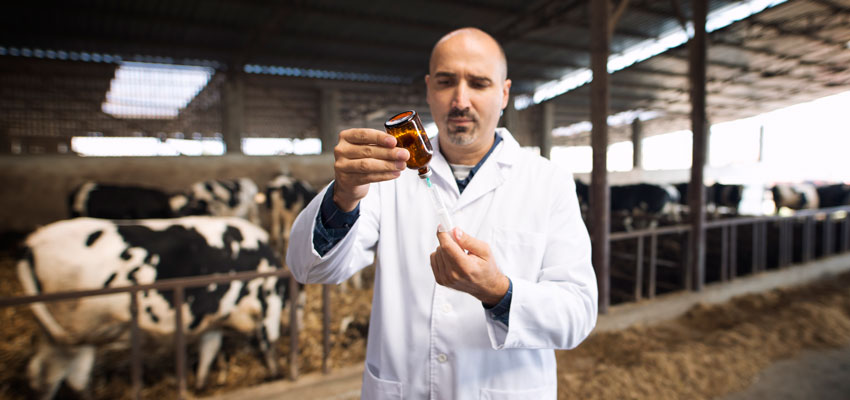Checking of antibiotics presence in foodstuffs is a topic of primary interest in view of the increasing attention consumers are paying to animal welfare and to the quality of the food. Moreover, a reduction in these substances makes it possible to deal pragmatically with the phenomenon of drug resistance.
What is an Antibiotic
Antibiotics are substances obtained from living organisms or synthetized in laboratories that are able to inhibit the growth of microrganisms to the point of stopping them or even inducing their death.
The first known antibiotic was Penicillin, discovered in an accidental way by Alexander Fleming in 1928. Since then, numerous molecules have been obtained that have contributed to garantee human and animal health.
Antibiotics can be classified in different ways according to their effects on microrganisms or their spectrum of action.
With respect to the target to be hit, the following classes of antibiotics can mainly be identified:
- Penicillins
- Macrolides
- Fluoroquinolones
- Cephalosporins
- Tetracyclines
- Sulfonamides/Sulphonamides
- Aminoglycosides
Legislation
At EU level, concerned the antibiotics, the reference for maximum residue values (MRLs) permitted in products of animal origin is Regulation (EC) 37/2010 as amended. This regulation lists the pharmacologically active substances and their classification.
At national level, every year the Ministry of Health, in collaboration with the regions, autonomous provinces, national reference laboratories for residues and the “Istituti Zooprofilattici” (IZS), draws up a National Residue Plan (NRP) with the aim of providing evidence of any illegal treatment or compliance with :
- Regulation (EC) No 37/2010 and subsequent amendments and supplements
- Regulation (EC) No 396/2005 and subsequent amendments and additions.
- Reg (EC) No 124/2009 and subsequent amendments and supplements
- Reg (EC) No 1881/2006 and subsequent amendments and supplements
The current situation
Drug resistance is the phenomenon whereby bacteria become insensitive to antibiotics and lose their activity. This situation creates problems both on farms and for the final consumer who, with a diet increasingly rich in animal products, takes on antimicrobial residues without realising it.
The claim "Antibiotic Free" on certain food products (ex:meat and eggs) allows producers to demonstrate the quality of their products as well as reducing the use of pharmacologically active substances.
The implementation of high quality standards, on voluntary bases, ensures that meat and meat products are obtained from animals that have not undergone antibiotic treatment on the farm, through an approach that is more restrictive than that required by law (which instead allows the use of antibiotics by using them in accordance with defined rules - see reg 37/2010).
What AGROLAB can do
AGROLAB provides an analytical service for the quantitative determination of numerous antibiotic molecules throughout the food chain. These are multiresidue methods and single methods that allow the determination of pharmocologically active substances through the use of liquid chromatography coupled with mass spectrometry (LC-MSMS).The methods developed by AGROLAB allow the determination of the following classes of antibiotics
- Tetracyclines
- Coccidiostats/Ionophores
- Sulphonamides
- Aminoglycosides
- Macrolides
- Beta-Lactams
- Quinolones
on the entire meat chain from the drinking water to the finished product, including feed control.
The agri-food technical assistance and your local sales representative will be happy to provide you with all the information you need to sample and interpret the data obtained in the laboratory.
Author: Giulio Lora (Technical Director and Lab Leader Food Chromatography)

 Contact
Contact

 Contact
Contact Career
Career